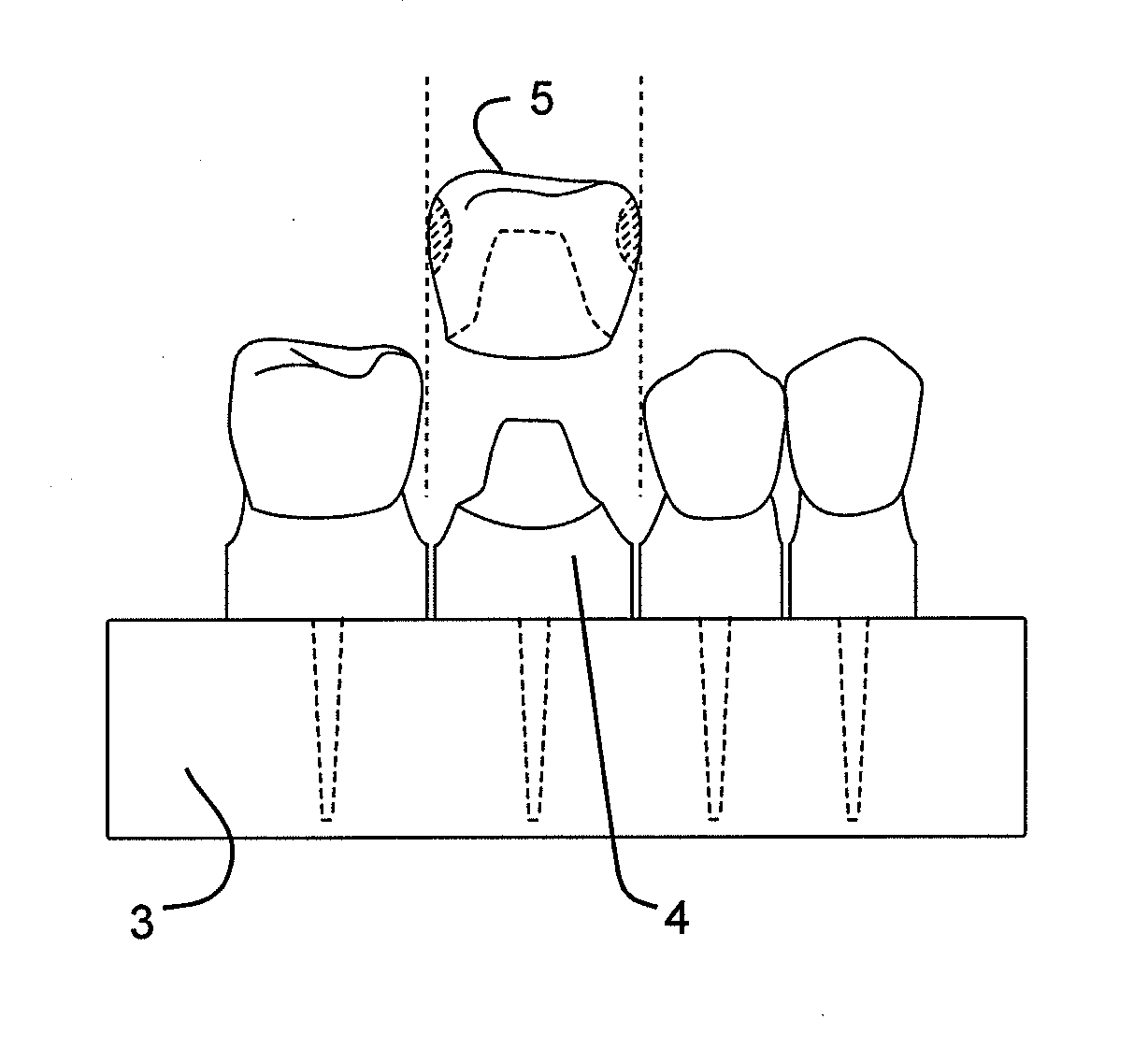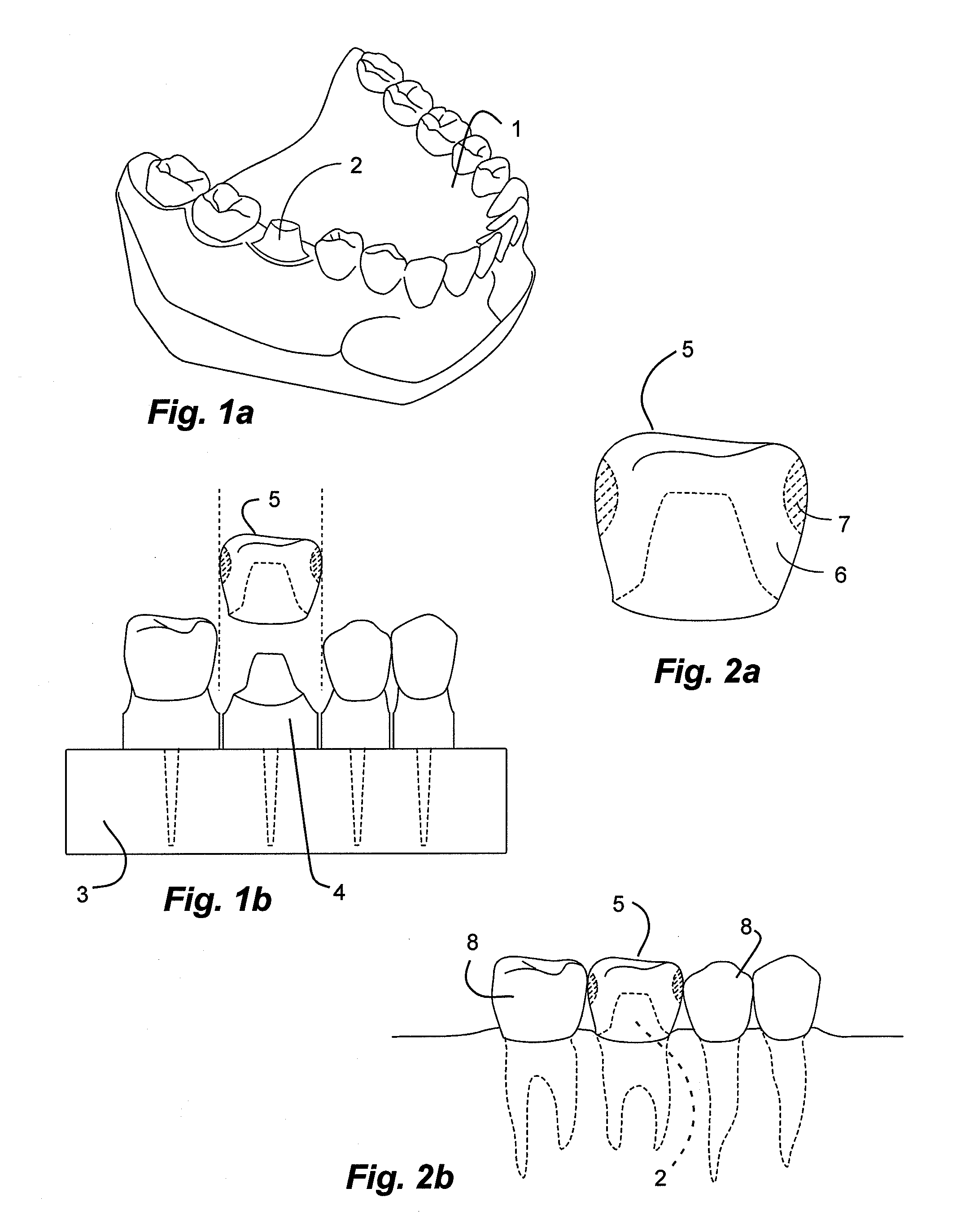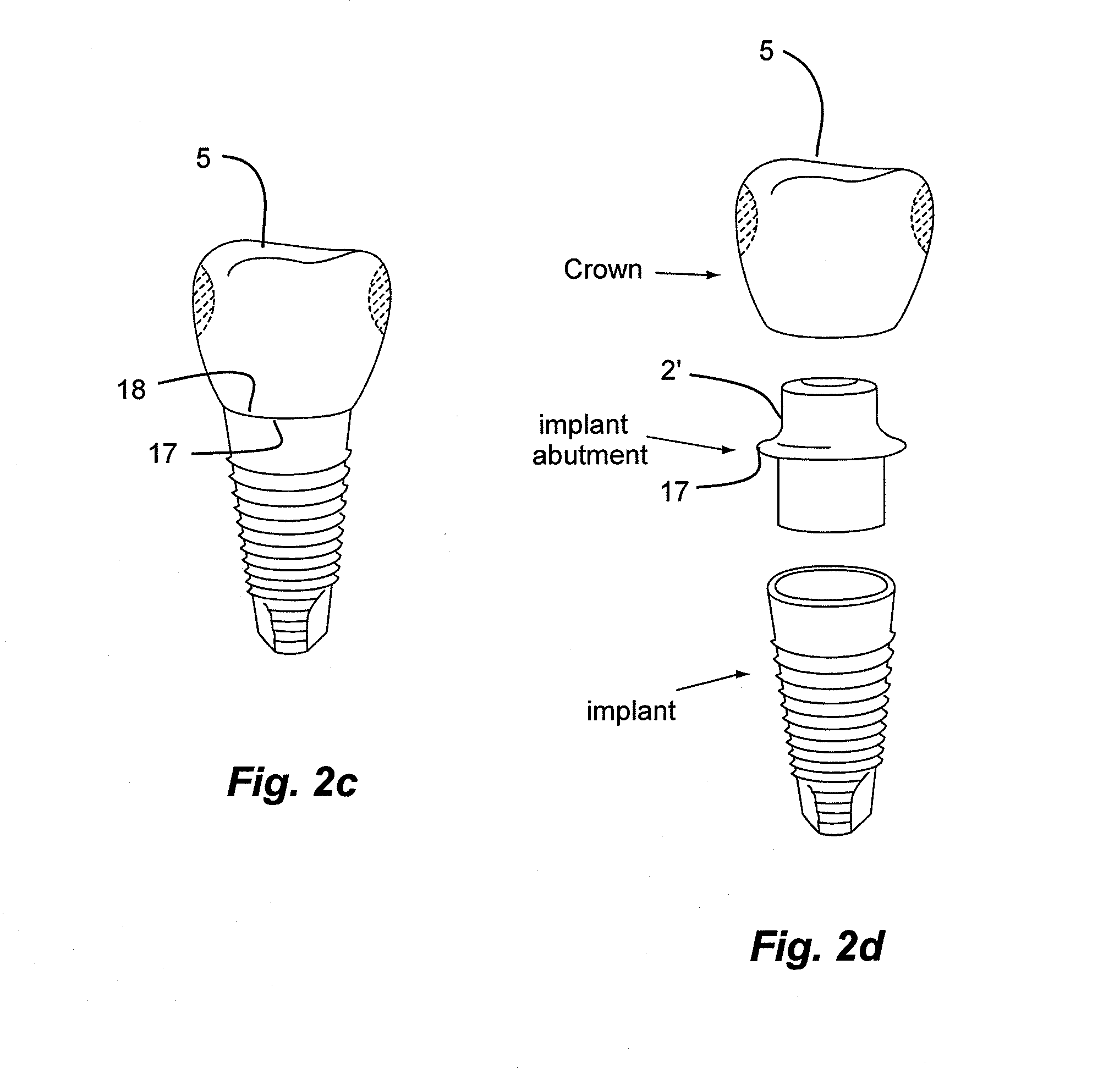Method of making a dental prosthesis
a dental restoration and prosthesis technology, applied in the field of making a dental restoration or prosthesis, can solve the problems of insufficient treatment and cavitation
- Summary
- Abstract
- Description
- Claims
- Application Information
AI Technical Summary
Benefits of technology
Problems solved by technology
Method used
Image
Examples
example 1
Full Contour Zirconia, Manual Creation of the Open Space
[0237](Margin line, Design of a crown with a closed contact) Margin line information of a cut tooth was received before starting to make a crown. As in FIG. 3, the crown margin line 18 was created to cause the crown margin line 18 and prepared tooth margin line 17 to correspond with each other. A full contour zirconia crown was first CAD (computer aided design) designed so that the mesial and distal area of the crown could abut with the adjacent human teeth, creating a closed contact as introduced in option 1-1 in FIG. 6.
[0238](Automated milling and manually creating the open space) Then this precursor crown, primarily made of ZrO2, was milled from a pre-sintered zirconia block using the CAD / CAM method. Afterwards, a small undercut 9 and / or 10 on each of the non-load bearing mesial and distal areas was created by grinding away the ceramic body portion with a hand tool, creating hollow open spaces 9 and / or 10 as shown in FIG. 6a...
example 2
Full Contour Zirconia, Automated Milling Machine Creates Open Space
[0244](Margin line, Design of a crown with an open contact) Margin line information of a cut tooth was received before starting to make a crown. The crown margin line 18 was created to cause the crown margin line 18 and prepared tooth margin line 17 to correspond with each other. A full contour zirconia crown was first CAD (computer aided design) designed so that the non-load bearing mesial and / or distal area could have an open space 9 and / or 10 away from the adjacent teeth 8, creating an open contact as introduced in option 2-1 in FIG. 6, or FIG. 20a or FIG. 21a.
[0245](Automated milling and mechanically creating the open space) Then this precursor crown 5′, primarily made of ZrO2, was milled from a pre-sintered zirconia block using the CAD / CAM method. At least one open space 9 and / or 10 was milled from the milling machine. The automated milling process can create the buccal contour 14 either before, or during, or a...
example 3
Full Contour Zirconia, Light Curing
[0251](Design of a restoration with or without an open space) A full contour zirconia crown was first CAD (computer aided design) designed on the computer monitor as in FIG. 6 so that the mesial and distal area could abut with the adjacent teeth 8 (option 1-1), creating a closed contact. Creating a closed contact generally means a restoration without an open space. An exception of this would be a case where an open space would exist outside the contact area. In other words, a precursor crown 5′ can have a closed contact and still have at least on open space as in FIG. 13d. Alternatively, as in FIG. 8, a full contour zirconia crown was first CAD (computer aided design) designed on the computer monitor so that the non-load bearing mesial and / or distal area can have an open space away from the adjacent teeth 8, creating an open contact 18. Alternatively, open contact of the inventive precursor crown 5′ can be created through option 2-1 of FIG. 6 or FI...
PUM
| Property | Measurement | Unit |
|---|---|---|
| temperature | aaaaa | aaaaa |
| temperature | aaaaa | aaaaa |
| distance | aaaaa | aaaaa |
Abstract
Description
Claims
Application Information
 Login to View More
Login to View More - R&D
- Intellectual Property
- Life Sciences
- Materials
- Tech Scout
- Unparalleled Data Quality
- Higher Quality Content
- 60% Fewer Hallucinations
Browse by: Latest US Patents, China's latest patents, Technical Efficacy Thesaurus, Application Domain, Technology Topic, Popular Technical Reports.
© 2025 PatSnap. All rights reserved.Legal|Privacy policy|Modern Slavery Act Transparency Statement|Sitemap|About US| Contact US: help@patsnap.com



